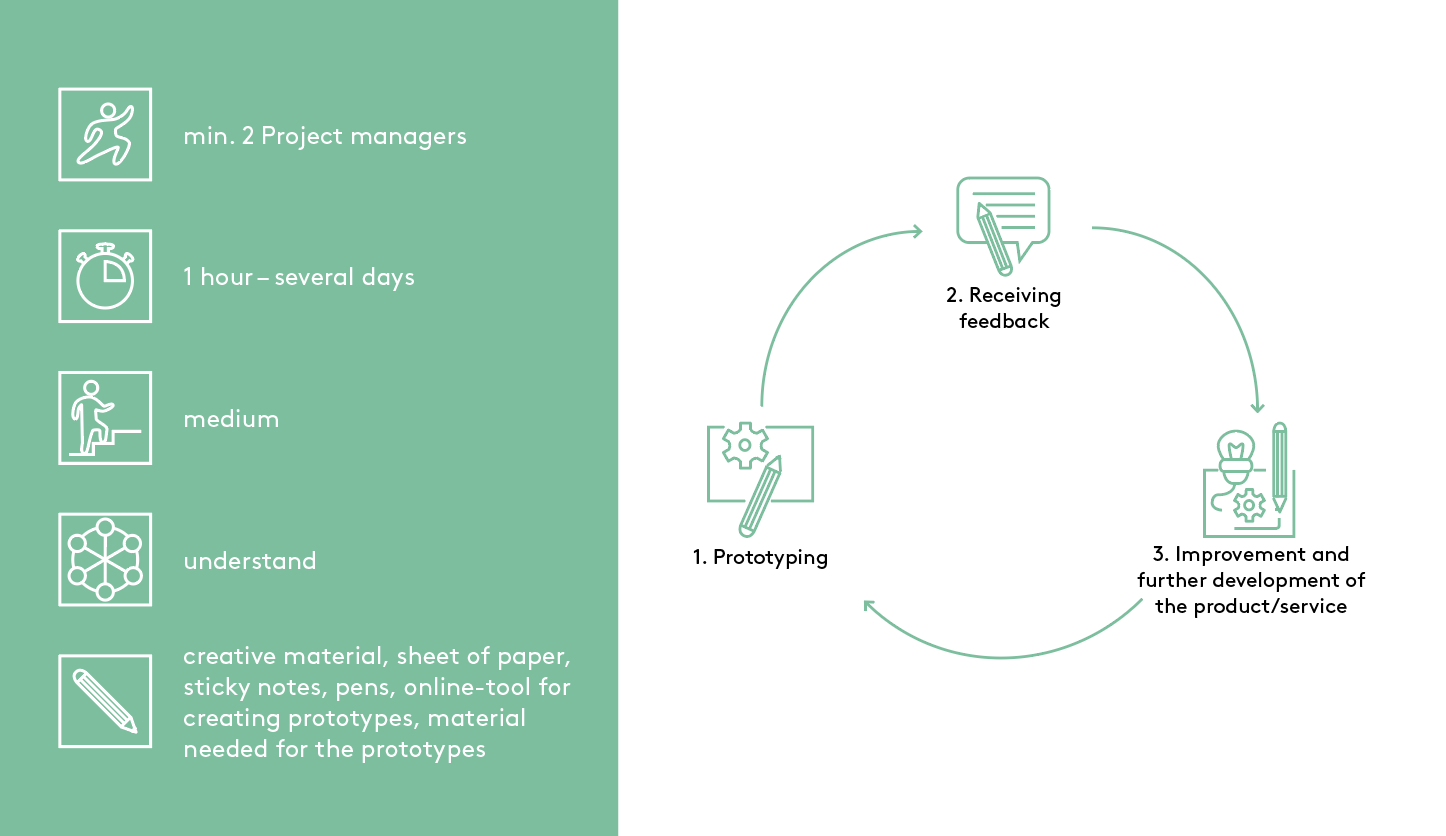The sub-project "Mobile Innovation Trailer (opentruck)" addresses challenges in münster.land.leben that affect rural regions with regard to health care, participation and well-being now and in the future. In order to be able to cover a region as large as possible, a permanently installed or located innovation workshop does not seem to make sense. Instead, citizens should be picked up in their daily environment - in the village, at the weekly market, at festivals. This gave rise to the idea of a mobile innovation trailer. The trailer serves as an information and communication platform: topics and questions in the context of health, participation and well-being are supported by multimedia and are dealt with and presented informatively, dialogically and creatively in the innovation trailer in the form of an exhibition. In order to design such an "opentruck" tailored to the target group, the subproject has produced various prototypes. In the "opentruck" subproject, different forms were used: from paper prototypes to model construction and digital 3D models to floor plans in original size of the entire trailer. After developing the concept in terms of content, it was first important to gain an impression of the interior of the trailer. A trailer that is 13 meters long and about 2.5 meters wide requires an exhibition concept that takes these rather untypical dimensions into account. To illustrate the size, a floor plan is sufficient at the beginning, which can be used to estimate walkways and the general space available. Using cardboard and tape, creating such a prototype took little effort. A scaled (detailed) model also helped to gain a spatial and visual impression of the project. In addition, design decisions could be quickly reviewed and alternatives explored. Using a cell phone camera, the first visual impressions from the visitor's perspective were quickly created on this model. At the same time, a three-dimensional model was very well suited to visualize the progress of the project to stakeholders in a lively and impressive way.




